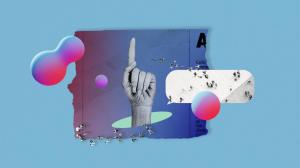City performance dashboard, predictive analytics among 160+ innovation contest standouts

Two lists of the most innovative technology projects in government were released by Harvard’s Ash Center for Democratic Governance and Innovation Wednesday.
A list of 100 semifinalists was released for the center’s 2017 Innovations in American Government competition. Semifinalists were selected from a pool of more than 500 applications coming from all levels of government and operational disciplines. About 10 of these are expected to be named as finalists in March to compete for two $100,000 grand prizes in June.
Another list of “Bright Ideas” includes more than 60 programs that were considered by the center to be either too new or too small to compete in the award competition. Both lists reveal a few trends, said Daniel Harsha associate director for communications at the Ash Center.
“We are starting to see more citizen participation and public participation initiatives at the state and the local level and this is something that policy makers, we believe, are really starting to embrace across multiple levels of government, whether it’s Oregon’s Citizens’ Initiative Review initiative, which is one of the bigger ones, to participatory budgeting.”
Harsha also noted the growing presence of data analytics programs that use data to impact public policy and decision making at all levels of government.
“We as an institution think there’s tremendous potential in the use of data to inform government and frankly most levels of government have really only scratched the surface,” he said. “The tools are so sophisticated and are coming more widely available and keep evolving. Frankly, it’s hard to keep abreast of the almost daily developments in the field.”
A standout in the Bright Ideas list, Harsha said, is Chicago’s Predictive Food Inspections program, which forecasts which restaurants are most likely to incur critical violations, allowing the city to allocate food inspectors accordingly.
“Within the broader field of data analytics, predictive analytics is the next big step and Chicago is really becoming a leader in this field. They’re very data-driven,” Harsha said. “It infuses a lot of what the government does. It’s a preview of larger efforts by local government to harness the power of predictive analytics.”
Boston’s CityScore platform was also a standout, he said. CityScore, according to the official city website, is “an initiative designed to inform the Mayor and city managers about the overall health of the City at a moment’s notice by aggregating key performance metrics into one number.” On the day this article was written, Boston’s CityScore was listed as 1.12 and a numerical breakdown of 21 metrics like “Streetlight On-Time %” and “Library Users” reveals why.
“It’s really quite new,” Harsha said of the dashboard. “That’s why it’s a Bright Idea and not part of the broader award system. We felt that it has great potential in the future, particularly if it builds up a body of data in future years.”
Virginia’s online paperless absentee ballot application is also exciting, Harsha said.
“We expect to see in the future more and more innovative voting programs as states look to expand access both at the polls that expand access in voter registration efforts, ” he said. “And this is a way that states can lower barriers to entry for absentee voting.”
The full list of Bright Ideas list can be found here.
2017 Innovations in American Government awards semifinalists can be found here.





